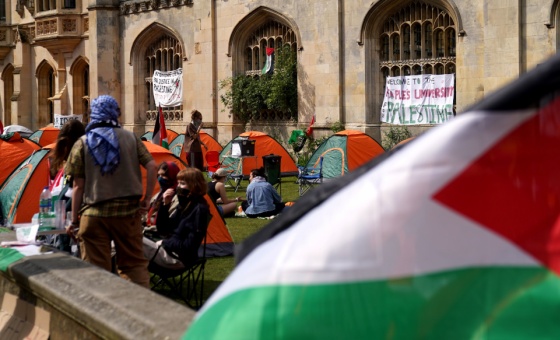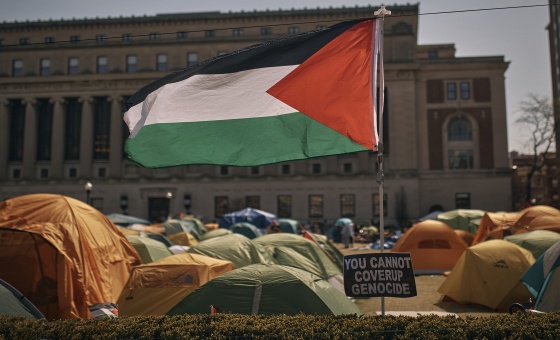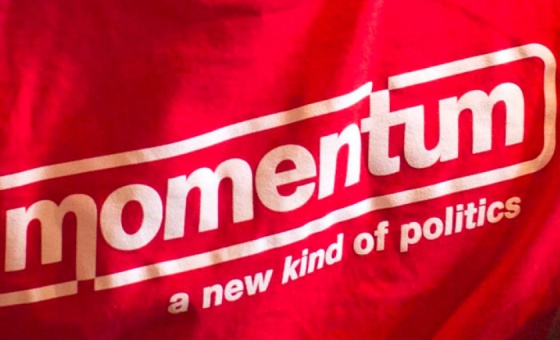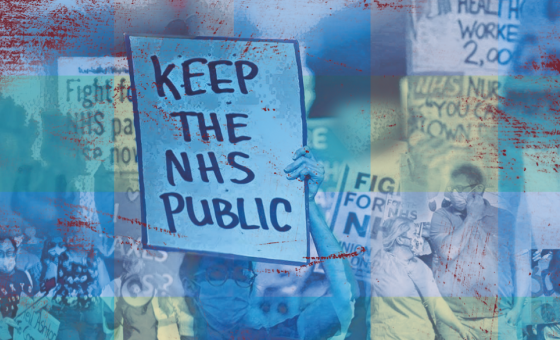This is the last article you can read this month
You can read more article this month
You can read more articles this month
Sorry your limit is up for this month
Reset on:
Please help support the Morning Star by subscribing here
THE FIRST principle in war reporting is never to believe an official source. I became even more convinced of this when, in Afghanistan in the 1980s, a provincial governor I was interviewing insisted that poppy production had been suppressed but that it was bad weather that made our flight out of his parish impossible.
As I looked along the valley glowing red with poppies, set against a perfect azure sky, I thought that the evident proximity of mojahedin with their newly CIA-supplied Stinger missiles might be a more compelling reason for our delay. And unless a new tulip-growing enterprise had seized the imagination of his Afghan villagers, that the governor was colour blind.
It is impossible to judge how the Ukraine war is going from even the closest reading of our mass media.
The reported discovery of civilian corpses and mass graves in areas vacated by Russian troops is already being mobilised to ramp up the prospect of deeper Nato involvement.
Whether or not the extent of any crimes committed in this near decade-long conflict meet the criteria for genocide as defined by the United Nations — “acts committed with intent to destroy, in whole or in part, a national, ethnical, racial or religious group, as such” — that much devalued term has already been mobilised.
This latest atrocity story is being mobilised in a largely propaganda effort to suggest that the members of the General Assembly of the United Nations could expel Russia from the security council where it has sat as a permanent member ever since the WWII victory over fascism.
There are several things to bear in mind about the way this will play out. Atrocities of these kinds inevitably occur in wars. There is no doubt that further examples of senseless killing will emerge and with them allegations that they are staged.
With great linguistic ingenuity the US military consider “collateral damage ‘not unlawful’ so long as it is not excessive in light of the overall military advantage anticipated from the attack.”
Indeed, they have developed digital tools to measure it with the title Fast-CD or Fast Assessment Strike Tool — Collateral Damage.
This enables the military and intelligence authorities to have a measure of the real-life effects of military operations in civilian environments that are denied the rest of us.
As a commentator slyly posted earlier this week: “Historians puzzle at how Mosul, Iraq, a city of three million, was flattened twice with American air strikes in 2003 and 2017, without a single photograph of dead bodies being published.”
If the evidence of conflicts in which the British army has been engaged is precedent it may take a long time before such crimes are acknowledged and even longer before anyone is convicted.
Much of the present commentary is unhinged and detached from rational thought or informed by military history.
Last week, the leading US magazine Newsweek ran a piece quoting a former high-level CIA official who opined: “I believe that at the heart of Russian military thinking is how Marshall (sic) Zhukov marched across eastern Europe to Berlin. Zhukov’s orders were to ‘line up the artillery and ... flatten everything ahead of you. Then send in the peasant army to kill or rape anyone left alive.’ Subtle the Russians are not.”
One twitter stream this week even speculated that Russian losses in Ukraine exceeded German losses in the second world war Battle of Kursk — the largest ever tank battle in history!
As a measure of scale we can note that German and Axis losses on the Eastern Front in the second world war totalled 5.1 million dead and 4.5 million captured while Soviet and Allied losses were 8.7–10 million dead and 4.1–5.7 million captured with a further 18-24 million civilian deaths.
The US lost 418,500 and Britain 450,700.
This week the United Nations High Commissioner for Human Rights (OHCHR) verified a total of 1,417 civilian deaths during Russia’s military attack on Ukraine as of April 2, 2022.
Again for comparison, that is about the same as the number of people killed by gunfire in the US over the same period.
Nevertheless OHCHR are undoubtedly right in speculating that casualties are higher than these figures suggest.
The combatants in the present phase of the war in Ukraine started off fairly evenly matched. At the outset Russia committed 190,000 troops to theatre while according to the International Institute of Strategic Studies (IISS), Ukraine had 196,600 active military personnel at the start of the invasion split into 125,600 ground troops, 35,000 air personnel, 15,000 naval troops and 900,000 reservists.
In the five weeks of combat, in the discussions that intelligence and military professionals conduct for our hyperbolic mass media, the question asked is why the Russians did not deploy their undoubted capacity to take out Ukraine’s air defences and deny the Ukrainian air force the capacity to intervene? And despite the highly visible material damage why are civilian casualties relatively low?
These are questions that do not trouble the mainstream mass media. For the rest of us the absence of contradictory views, the deeply embedded nature of the reporting and the unwavering media consensus makes for such a powerful bias against understanding that any political debate is desperately impoverished.
This selective amnesia is reinforced by the truth that this war is Putin’s war in both reality and in the confected world of the Western media.
The Russian media operation has been a disaster in the West while — in a mirror image — Putin’s account has real purchase in Russia and some influence in countries outside Nato’s orbit.
It is impossible to calibrate the extent to which Putin’s bizarre behaviour and ridiculous rhetoric has lost him credibility in Russia. There the war is presented as a defence of the besieged border regions under assault from Ukraine’s Nazi-infested military. It is clothed in an anti-Nazi rhetoric that has a special resonance for a nation that paid such a high price in the second world war.
Where dissent has emerged — including in the Communist Party of the Russian Federation — it appears as much grounded in the realisation that Putin has wider aims than the defence of the disputed border regions as in any general anti-war sentiment.
The one under-reported feature of Putin’s pitch which has passed by much of our media is its desperately anti-communist character. His verbal assault on Lenin’s insistence on the right of Ukraine to make its own choices, or even Stalin’s rather more conditional presentation of the matter, marks him out as more in tune with traditional reactionary, nationalist, even pre-revolutionary narratives than the main trends in contemporary Russian thinking.
Less than a year ago a poll by the independent Levada Centre showed 56 per cent of Russians thought that Stalin was a “great leader” — twice the figure in 2016.
Over the same period Putin’s rating “as the most outstanding figure in Russian history” slipped from 32 per cent to 15 per cent — behind Peter the Great and just ahead of Yuri Gagarin, the first man in space.
Far from attempting a socialist reconstruction of the USSR, Putin seems fixated on a restoration of an ersatz tsarist regime, complete with Russian Orthodox bells, smells and candles and a palace guard in comic opera uniforms. The tsarist court of landowning nobles is today replaced by a conclave of servile oligarchs and their trophy wives.
Zelensky has had the advantage in the media war. Ukrainians voted for his programme of opposition to the corruption of the nation’s politics and the power of the oligarch boss class that calls the shots. Yet, according to the New York Post and Reuters, “Zelensky won the presidential election in 2019 after much of his campaign was bankrolled by one of Ukraine’s richest — and most corrupt — oligarchs, Igor Kolomoisky.”
Kolomoisky’s power then rested on his proximity to power in Kiev, his immense riches as founder of the country’s largest commercial bank and his $10 million stake in the Azov and Dnipro militia battalions.
Zelensky’s domestic popularity — it has risen from last December’s slump of just 31 per cent to 90 per cent today — and his high visibility in the West, belies the reality that he stands on a very narrow slice of political territory with his own freedom to manoeuvre circumscribed by immense pressures.
A new pressure is the imposition of US sanctions on his patron Kolomoisky who is accused by US secretary of state Blinken of “corrupt acts that undermined the rule of law and the Ukrainian public’s faith in their government’s democratic institutions and public processes.”
Who knows why Kolomoisky has lost his protected status? He was originally appointed governor of Dnipropetrovsk oblast in the east of the country, with the task of preventing the territory from falling into the hands of pro-Moscow rebels.
Just how long President Zelensky has been without independent agency or command over his state machine emerged last week with a two-year old video clip of him debating with combatants on the front line of the conflict that has raged for years in Lugansk and Donetsk.
He wanted to withdraw some of the militia as a negotiating ploy but the combatants there refused and this, reportedly, was followed by threats against his life by far-right elements.
As the human costs of this war become even more apparent, the murderous hypocrisy of the Nato establishment is more exposed.
On the eve of the Russian invasion — and with the benefit of whatever intelligence was available — Biden signalled that if the Russians advanced only as far as the besieged Donbass then a unified Nato response would be difficult to achieve.
This was simply mood-musical accompaniment to the clear signal from Nato’s general secretary and the British government weeks earlier that the self defence treaty obligation in Article Five of the Nato Charter offered Ukraine no protection whatsoever.
Reflect that it was precisely Article Five which was invoked to draw Nato states into the “war on terror” following the September 11 al-Qaida attacks.
Nato’s strategy is to arm Ukraine with sufficient battlefield weaponry to ensure the bloodletting continues and with this Zelensky has been remade — no longer as a client of a discredited Ukrainian oligarch — but as, today, the hero of his people. And tomorrow the fall guy.
When Nato bosses combine massive arms transfers to Ukraine with an insistence that a “no fly zone” is not possible they are really saying that Russia must be fought until the last drop of Ukrainian blood.
Nick Wright blogs at 21centurymanifesto.










